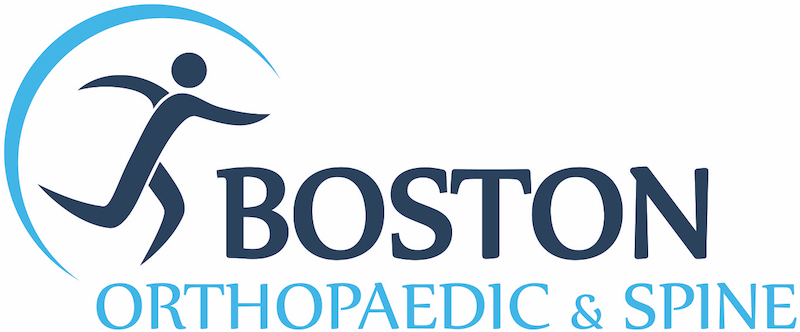The Elbow Center
Expertise in Elbow Conditions & Procedures
BACKGROUND
The elbow is more than a simple hinge. The unique arrangement of bones and tissues allows for a unique pattern of flexion and rotation. Injuries to the elbow are often the result of overuse, falls, or repetitive throwing activities. Our physicians are experts in the diagnosis and treatment of elbow problems. They provide an extraordinary base of shared knowledge with leading-edge surgery and treatment.
COMMON ELBOW CONDITIONS
People experiencing elbow pain or who have an elbow injury may have pain, swelling, tenderness, and numbness. In more severe cases, they may experience elbow instability or loss of the elbow’s normal movement. Some of the most common conditions include:
- Tennis elbow (lateral epicondylitis)
- Golfer’s elbow (medial epicondylitis)
- Bursitis
- Cubital tunnel syndrome
- Osteochondritis dessicans
- Fractures
- Arthritis
- Dislocation or Instability
- Ruptured biceps/triceps tendon
- Common Elbow Injuries
- Biceps Tendonitis
Whether you have had pain for years or your pain is new, we are here to help.
TREATMENTS
Most patients do not need surgery to manage their elbow pain. In many cases, activity modification, injections, therapy, and splinting can effectively treat the problem. When surgery is required, our highly-skilled team will take you down the road to recovery.
Common Causes of Elbow Pain
The elbow is hinge-type joint, and is the location where the humerus in the upper arm meets the radius and ulna in the forearm. The board-certified, fellowship-trained experts at Boston Orthopaedic & Spine are leaders in their field and have the training and skill to help you live pain free.
ELBOW ANATOMY
The elbow is the joint that connects a person’s forearm with the upper arm.
- Joint where the humerus meets the radius and the ulna. In addition to allowing the forearm to bend and extend it also allows rotation.
- Elbow forms from the expansion of the lower end of the humerus into two thick knobs, or condyles.
- Several ligaments and tendons connect the bones of the elbow and power the muscles to move the joint.
COMMON CAUSES OF ELBOW PAIN AND INJURY TREATED AT BOSTON ORTHOPAEDIC & SPINE
Tendonitis
Tendonitis is inflammation of the tendons, the tissue that connects muscle to bone. Tendonitis is caused by overuse (repetitive motion) or sudden injury. Tendonitis symptoms include pain in the tendon area, swelling, and loss of motion.
Bursitis
Bursitis is painful inflammation of the bursae, the fluid-filled sacs that reduce friction between bones, tendons, and muscles. Bursitis in the shoulder is commonly caused by an injury, infection or other condition. Pain may be accompanied by swelling, tenderness or loss of movement. Treatment is rest, ice, activity modifications, injections, and in some cases, surgery.
Tennis elbow (lateral epicondylitis)
Tennis elbow is caused by the overuse of the forearm, hand and other arm muscles, causing injury to the tendons on the outside area of the elbow. Symptoms include pain on the outside of the elbow that may also be present in the forearm and wrist, which worsens with activity (such as shaking hands, lifting objects, and opening jars). Although this is common in tennis players, anyone who performs repetitive arm and wrist motions may develop tennis elbow, or tendinopathy. Treatment is rest, ice, activity modifications, injections, and in some cases, surgery.
Golfer’s elbow (medial epicondylitis)
Similar to tennis elbow, golfer’s elbow (or medial epicondylitis) is caused by overusing the forearm muscles through repetitive gripping, swinging (such as in golf), or flexing, which causes damage to the tendons (tendonitis) near the elbow. Pain from golfer’s elbow generally occurs on the inside of the elbow and down into the forearm. Treatment is rest, ice, activity modifications, injections, and in some cases, surgery.
Little league elbow (pitcher’s elbow)
Little league elbow (also known as pitcher’s elbow or medial apophysitis) is an overuse injury that affects children and adolescents involved in sports that require a repetitive throwing motion, such as pitching in baseball. Symptoms include pain, swelling and restricted motion.
Cubital tunnel syndrome
Cubital tunnel syndrome, also known as ulnar neuropathy, is the compression or irritation of the ulnar nerve, which runs through the groove along the medial side of the elbow (in the area commonly referred to as the funny bone). Cubital tunnel symptoms include pain, numbness, and muscle weakness. Treatment includes anti-inflammatory medications, splinting, activity modifications, and in some cases surgery.
Osteochondritis dissecans
Osteochondritis dissecans occurs in children and adolescents when a piece of bone or cartilage inside a joint loses blood supply. This causes a piece of the cartilage, and usually a thin layer of bone beneath it, to separate and sometimes fall into the joint space. Symptoms commonly include pain, swelling, and problems moving the affected joint. Treatment includes rest, and when it is not healing properly, surgery.
Fractures
A fracture is a break in a bone. Broken bone symptoms include pain (intensified when the area is moved or pressure is applied), swelling, bruising, and loss of function. Fractures may also cause the area around the bone to appear distorted or deformed, especially in open fractures where the bone protrudes from the skin.
A stress fracture is a hairline crack in a bone that can worsen during activity over time. Stress fracture symptoms include pain, which increases with activity and decreases after rest, in addition to swelling and tenderness.
Arthritis
Arthritis, or osteoarthritis, is loss of cartilage within a joint. While there are many other types of arthritis, including rheumatoid, psoriatic, septic, post-traumatic, and lupus, wear and tear osteoarthritis remains by far the most common. Arthritis symptoms can include swelling, tenderness, sharp pain, stiffness, and sometimes fever and chills.
Bone spurs
Bone spurs (also known as osteophytes) are bony projections that develop on the surface of the bone, and are often the result of osteoarthritis. Bone spurs usually do not cause symptoms, but can cause swelling, pain, and tearing to the surrounding tissue or tendon. Corns or calluses may also build up over time to provide padding in the area of the bone spur.
Dislocation
Elbow joint dislocation occurs when the forearm bones (the radius and ulna) move out of alignment with the upper arm bone (the humerus). This is generally the result of trauma. Elbow dislocation is accompanied by swelling, pain, and inability to bend the arm at the elbow. Treatment involved reduction, immobilization, physical therapy, and in some cases surgery.
Ruptured biceps tendon
The tendon connecting the biceps muscle to the radius may encounter too much force and rupture, leading to pain and a bulging deformity in the arm. It is most often caused by a sudden injury in which heavy weight is resisted by elbow flexion. This injury causes weakness in both elbow flexion and forearm rotation. Surgery is often required to regain full strength.
Wear and Tear
Osteoarthritis occurs when the cartilage surface of the elbow is damaged or becomes worn. The elbow is one of the least affected joints due to its well matched joint surfaces and strong stabilizing ligaments. However, the cartilage can be damaged because of a previous injury such as elbow dislocation or fracture, or due to degeneration of the joint cartilage from age. It usually begins after age 50, although some patients can have symptoms earlier. Osteoarthritis usually affects the weightbearing joints, such as the hip and knee.
A doctor can usually diagnose elbow arthritis based upon a patient’s symptoms and standard X-rays. X-rays show the arthritic changes. Most of the time, advanced imaging studies such as CT (computed tomography) or MRI (magnetic resonance imaging) scans are not needed.
RISK FACTORS/PREVENTION
The best way to prevent elbow arthritis is to avoid injury to the joint. When injury does happen, it is important to recognize it right away and get treatment. Individuals involved in heavy work or sports activities should maintain muscular strength around the elbow. Always use proper conditioning and technique.
Most patients who are diagnosed with elbow osteoarthritis have a history of injury to the elbow, such as a fracture that involved the surface of the joint, or an elbow dislocation.
Sometimes there is no single injury. Work or outside activities may also lead to elbow arthritis if the patient places more demands on the joint than it can bear. For example, professional baseball pitchers place unusually high demands on their throwing elbows which can lead to failure of the stabilizing ligaments.High shear forces placed across the joint can lead to cartilage breakdown over a period of years.
Symptoms
The most common symptoms of elbow arthritis are:
- Pain
- Loss of range of motion
- Joint swelling may also occur. But this does not usually happen at first. Swelling occurs later, as the disease progresses.
- A “grating” or “locking” sensation in the elbow. The “grating” is due to loss of the normal smooth joint surface. This is caused by cartilage damage or wear. The “locking” is caused by loose pieces of cartilage or bone. These can dislodge from the joint and become trapped between the moving joint surfaces, blocking motion.
- Numbness in their ring finger and small finger can occur in later stages. Swelling in the elbow joint can put increased pressure on the ulnar nerve. See Ulnar Nerve Entrapment
TREATMENT OPTIONS FOR OSTEOARTHRITIS
Treatment options depend on the stage of the disease, prior history, what the patient desires, overall medical condition, and the results of X-rays.
Treatment Options: Non-Surgical
For the early stages, the most common treatment is non-surgical. This includes oral medications such as Tylenol® or Advil®, physical therapy, activity modification and joint injections.
Sometimes corticosteroid injections are used to treat arthritis symptoms. Steroid medication has typically been used with good results. The affects are temporary, but injections may give significant relief until symptoms progress enough to need additional treatment. An alternative to steroids has been the injection of hyaluronic acid in various forms. This attempts to increase the fluid in a joint, a process called viscosupplementation. It surrounds the diseased cartilage with a thicker and more “cushioned” environment.
When nonsurgical interventions are not enough to control symptoms, surgery may be needed.
Treatment Options: Surgical
By the time arthritis can be seen on X-rays, there has been significant wear or damage to the joint surfaces. If the wear or damage is limited, arthroscopy can offer a minimally invasive surgical treatment. Arthroscopy has been shown to provide symptom improvement at least in the short term. It involves removing any loose bodies or inflammatory/degenerative tissue in the joint. It also attempts to smooth out irregular surfaces. Multiple small incisions are used to complete the surgery, which can be performed as an outpatient procedure. The recovery is reasonably rapid.
If the joint surface has worn away completely it is unlikely that anything other than a joint replacement would bring about relief. There are several different types of joint replacement available. In appropriately selected patients, the improvement in pain and function can be dramatic. With an experienced surgeon, the results of elbow replacement are the same as the results of hip replacement and knee replacement.
For patients who are too young or who are too active to have prosthetic joint replacement, there are other reasonably good options. If loss of motion is the primary symptom, the surgeon can release the contracture and smooth out the joint surface. At times, a new surface made from the patient’s own body tissues can be made. These procedures can give years of symptom improvement.
ABOUT TOTAL ELBOW REPLACEMENT
A total elbow replacement is the replacement of the entire elbow joint with a metallic joint. This is done through a 4-6 inch incision along the posterior aspect (back) of the elbow. The incision is usually closed with staples. A elbow replacement is usually treatment for severe arthritis or a fracture.
Average Length of Surgery: 2 ½ hours
Average Length of Stay: 3 days in hospital
Blood donation: Generally not needed. It is possible that the patient may require a transfusion of one unit following surgery. Therefore, we ask the patient to donate one unit of blood pre-operatively.
Social Services: Home physical therapy, visiting nurses, nursing home/rehab center transfers and home health aides are arranged for the patient by the hospital social worker. They will also arrange for transportation to the patients home or rehab facility if family/friends are not available.
Post Op Visits:
1st Post-Op visit:
The patient must be seen in the office between the 10th and 14th post-operative day. This is for staple/suture removal and a wound check. At this visit outpatient physical therapy may also be discussed/arranged.
If a patient reports unusual redness, drainage, pus or irritation of the wound prior to this first visit, arrangements should be made to bring the patient in immediately.
If the patient is unable to make the 1st post-operative visit, arrangements for staple removal must be arranged with their inpatient facility, visiting nurse or family physician. Then, a post-op visit should be arranged for the next earliest possible date.
RECOVERING FROM TOTAL ELBOW REPLACEMENT
A total elbow replacement is the replacement of the entire elbow joint with a metallic joint. This is done through a 4-6 inch incision along the posterior aspect (back) of the elbow. The incision is usually closed with staples. A elbow replacement is usually treatment for severe arthritis or a fracture.
Post Op Visits
1st Post-Op visit:
The patient must be seen in the office between the 10th and 14th post-operative day. This is for staple/suture removal and a wound check. At this visit outpatient physical therapy may also be discussed/arranged.
If a patient reports unusual redness, drainage, pus or irritation of the wound prior to this first visit, arrangements should be made to bring the patient in immediately.
If the patient is unable to make the 1st post-operative visit, arrangements for staple removal must be arranged with their inpatient facility, visiting nurse or family physician. Then, a post-op visit should be arranged for the next earliest possible date.
2nd Post-Op visit:
Generally at 6 weeks following surgery date – needs x-rays
3rd Post-Op visit:
At 3 months post-op.
4th Post-Op visit
At 6 months or 1 year – dependent on progress
REHABILITATION
In Hospital: All patients begin therapy in the hospital immediately following surgery.
The patient utilize a continuous passive motion machine (CPM) post-operatively for range of motion. This will be continued in the patient’s home for 2-4 weeks post-operatively.
Inpatient: Reserved for the following types of individuals:
- Lives alone
- No family/friend support
- Elderly
Home physical therapy: Available to all patients immediately following discharge. Home therapy lasts approximately 2-3 weeks
Outpatient PT: All patients will enter an outpatient PT program for 6-8 weeks to work on range of motion and strength.
Driving: Patient should not drive for 4-6 weeks unless told otherwise by the physician
Broken Arm/Elbow
Most people know right away if they broke their arm due to a snap or loud cracking sound, extreme pain at the site of the injury, pain increased by any movement, and / or loss of normal use of the arm. Arms often break due to a fall on an outstretched arm or major accident such as a car crash. Common fracture points include the wrist, radius (forearm), elbow, and humerous.
Trying to break a fall by putting your hand out in front of you seems almost instinctive, but the force of the fall could travel up your lower forearm bones and dislocate your elbow. It also could break the smaller bone (radius) in the forearm. The breaks can occur at the wrist (Colles fracture), or near the elbow at the radial “head.” Children are more likely to break the bones in their lower arm, which are called the radius and ulna. A direct blow to the elbow or fall on a bent elbow can cause it to break. About one in every 20 fractures involves the upper arm bone which is called the humerus.
If you have any of these signs or symptoms after a fall, see your doctor:
- Pain or swelling at the site of the injury (outside of the elbow, wrist, etc)
- Pain increased by any movement of the injured area
- Loss of normal use of the arm.
- Difficulty in bending or straightening the elbow accompanied by pain
- Inability or difficulty in turning the forearm (palm up to palm down or vice versa)
- Numbness in one or more fingers.
FIRST AID
Because breaks often occur as a result of an accident first aid is usually required.
- Make sure the injured person is out of the way of further harm.
- Check to see if they are breathing normally.
- Check their pulse.
- Call 911 if their breathing and/or pulse are irregular, if there is serious bleeding, or if there is reason to suspect multiple broken bones or other injuries.
- Elevate the injured arm above the person’s heart. This slows bleeding and reduces swelling.
- If the bone is sticking out from the skin do not try to push it back in. Instead, cover it with a clean, dry cloth or bandage.
- Do not use the broken arm. Moving the arm could cause further injury. To immobilize a broken arm:
- Make a temporary splint. Find something long and stiff to attach to the site of the injury. Wood or rolled up magazines or newspapers attached to the arm with cloth, belts or tape can be used to immobilize the joint. Make sure both ends of the splint extend far above and below the injury. Tie the splint tight enough to hold it in place, but not so tight as to reduce blood flow.
- Make a sling. Place the injured arm across the chest with the hand resting near the shoulder. Use a loop of cloth supported from the neck and around the arm to stabilize the injury and support the splint.
Take the injured person to a doctor immediately
REPAIRING A BROKEN ARM
The Doctor’s Visit
Tell the doctor exactly what happened. He or she will physically examine the broken arm and check for other injuries, such as nerve damage. The doctor may want to see if the patient can flex and extend the wrist and fingers. Sometimes the doctor may use X-rays or other diagnostic imaging tools to see the bones of both the injured and uninjured arms.
What to Expect
The doctor may need to move pieces of bone back into their correct positions (a process called reduction). Depending upon the severity of injury, the patient may or may not need anesthesia. Those with more serious fractures may require surgery.
Once the broken bone is back in place the arm is immobilized by placing it in a cast or splint. You will be advised how long to wear the cast or splint, and given a follow-up appointment to check on the bone healing and cast removal.
Fracture Types and Treatments
Radial head fractures are classified according to the degree of displacement (movement from the normal position).
Type I fractures are generally small, like cracks, and the bone pieces remain fitted together.
- The fracture may not be visible on initial X-rays, but can usually be seen if the X-ray is taken three weeks after the injury.
- Nonsurgical treatment involves using a splint or sling for a few days, followed by early motion.
- If too much motion is attempted too quickly, the bones may shift and become displaced.
Type II fractures are slightly displaced and involve a larger piece of bone.
- If displacement is minimal, splinting for one to two weeks, followed by range of motion exercises, is usually successful.
- Small fragments may be surgically removed.
- If the fragment is large and can be fitted back to the bone, the orthopaedic surgeon will first attempt to fix it with pins or screws. If this is not possible, however, the surgeon will remove the broken pieces or the radial head.
- The surgeon will also correct any other soft-tissue injury, such as a torn ligament.
Type III fractures have more than three broken pieces of bone, which cannot be fitted back together for healing.
- Usually, there is also significant damage to the joint and ligaments.
- Surgery is always required to remove the broken bits of bone and repair the soft-tissue damage.
- Early movement is necessary to avoid stiffness.
Regardless of the type of fracture or the treatment used, physical therapy will be needed before resuming full activities.
Cast Care
It’s important that you take good care of your cast during your recovery period. Information regarding the care of your cast can be found here.
RECOVERING FROM A BROKEN ARM
Rehabilitation
It may take from several weeks to several months for the broken arm to heal completely. Rehabilitation involves gradually increasing activities to restore muscle strength, joint motion and flexibility. The patient’s cooperation is essential to the rehabilitation process by completing range of motion, strengthening and other exercises prescribed by the doctor. Rehabilitation lasts until tissues perform their functions normally. After rehabilitation, the doctor may want to see the arm again to make sure healing is complete.
Cast Care
It’s important that you take good care of your cast during your recovery period.
Our Team
Thomas F. Burke, MD
Learn More
About Dr. Burke
Orthopedics Surgeon
Specializing in: Sports Medicine, Arthroscopy,
Trauma & Fracture Care, Shoulder Reconstruction
Jennifer B. Green, MD
Learn More
James A. Karlson, MD
Learn More
Glen Ross, MD
Learn More
Anthony J. Schena, MD
Learn More
About Dr. Schena
Orthopedic Surgeon
Specializing in Sports Medicine, General Orthopedics (Knee, Shoulder, and Joint Reconstruction)
Jinsil K. Sung, MD
Learn More
Trusted by Top Teams & Healthcare Institutions


Take the First Step
Get an accurate diagnosis and treatment plan
from our expert physician team.






